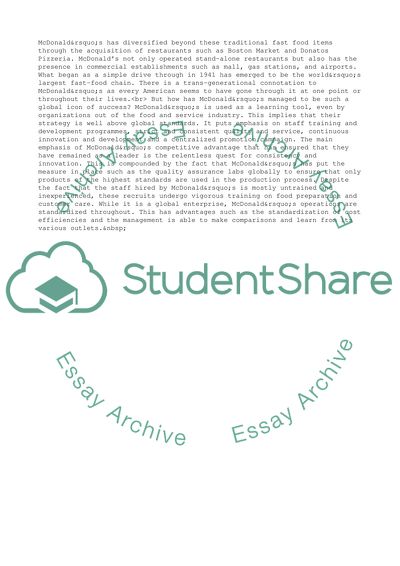Cite this document
(Organisational Behavior of McDonald's Essay Example | Topics and Well Written Essays - 4000 words, n.d.)
Organisational Behavior of McDonald's Essay Example | Topics and Well Written Essays - 4000 words. Retrieved from https://studentshare.org/management/1711473-organisational-behaviour-mc-donnalds-report
Organisational Behavior of McDonald's Essay Example | Topics and Well Written Essays - 4000 words. Retrieved from https://studentshare.org/management/1711473-organisational-behaviour-mc-donnalds-report
(Organisational Behavior of McDonald'S Essay Example | Topics and Well Written Essays - 4000 Words)
Organisational Behavior of McDonald'S Essay Example | Topics and Well Written Essays - 4000 Words. https://studentshare.org/management/1711473-organisational-behaviour-mc-donnalds-report.
Organisational Behavior of McDonald'S Essay Example | Topics and Well Written Essays - 4000 Words. https://studentshare.org/management/1711473-organisational-behaviour-mc-donnalds-report.
“Organisational Behavior of McDonald'S Essay Example | Topics and Well Written Essays - 4000 Words”, n.d. https://studentshare.org/management/1711473-organisational-behaviour-mc-donnalds-report.


